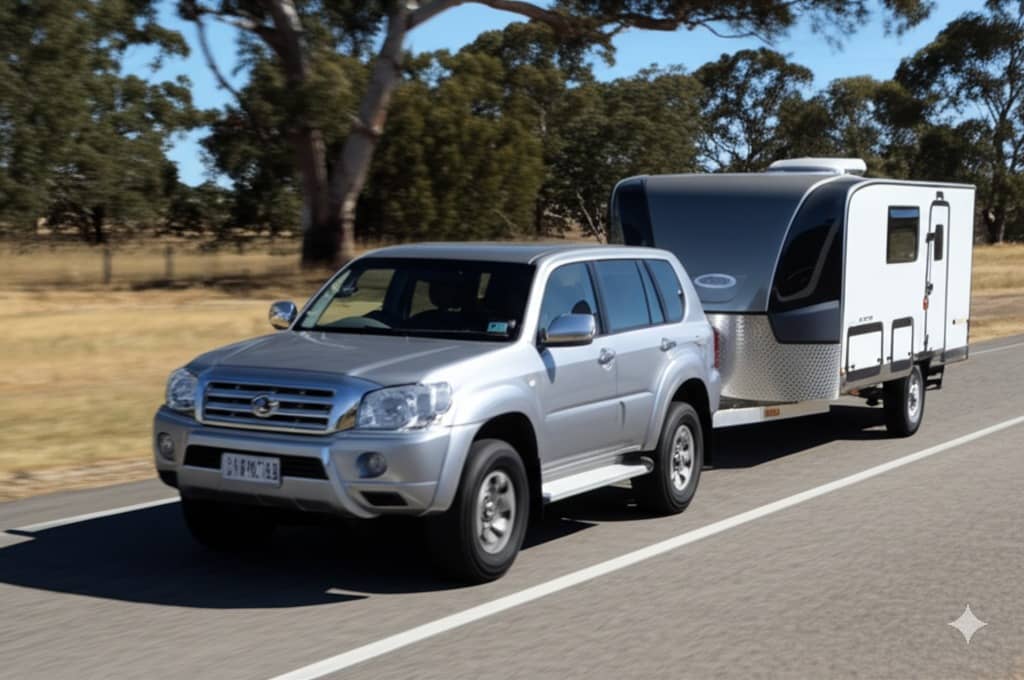Whether you’re planning a weekend camping trip, moving bulky items, or setting off on an epic road trip, a small trailer can significantly boost your car’s hauling power. But alongside this convenience comes a crucial responsibility: safety. Towing changes how your vehicle handles, brakes, and responds overall.
To help ensure every journey with your trailer is safe and smooth, we’ve put together these essential tips, drawing on expert advice (like you might find from specialists such as Trailers Star Australia) and universal towing safety principles:
I. Detailed Pre-Trip Checks – Safety Starts Before You Go
Before hitching up and starting the engine, be sure to conduct a thorough inspection:
- Coupling & Hitch:
- Ensure the trailer is securely connected to the tow vehicle’s tow ball, and the locking mechanism is fully engaged.
- Correctly cross and connect the safety chains, leaving enough slack for turns, but ensuring they can effectively control the trailer if the coupling fails.
- Check that the trailer’s electrical cable (for brake lights, turn signals, etc.) is securely connected and functioning correctly.
- Lights:
- Work with a partner or use a reflective surface to check all trailer lights – brake lights, tail lights, turn signals, and number plate light – are working in sync with the tow vehicle. Any faulty lights must be repaired before departure.
- Tyres:
- Inspect all tyres on both the tow vehicle and the trailer. Ensure tyre pressure meets the manufacturer’s recommendations (trailer tyres often require higher pressure).
- Check tyres for excessive wear, cracks, bulges, or other damage. Don’t forget the spare tyre!
- Load Distribution & Security:
- Weight Distribution: This is critical! Place approximately 60% of the load’s weight forward of the trailer’s axle line and 40% behind it. Also, ensure the downward pressure on the tow ball (Tow Ball Download, TBD) is roughly 10% of the trailer’s total weight (ATM – Aggregate Trailer Mass). Correct weight distribution significantly reduces the risk of trailer sway.
- Centre of Gravity: Position heavy items as close to the trailer’s centreline as possible and keep the centre of gravity low.
- Security: Use straps or nets of adequate strength and quantity to firmly secure all cargo, preventing it from shifting or falling during transit.
- Do Not Exceed Limits: Make sure the total weight of the trailer (including cargo) does not exceed the trailer’s rated ATM and GTM (Gross Trailer Mass), nor the tow vehicle’s maximum legal towing capacity and tow ball download limit.
II. On-Road Driving Techniques – Smoothness is Key
When towing a trailer, your driving style needs to adapt:
- Reduce Speed:
- Strictly adhere to any specific speed limits for vehicles towing trailers (these can vary by state/territory in Australia and are often lower than the standard limit).
- Even on roads without specific trailer speed limits, drive slower than you normally would to allow more reaction time.
- Increase Following Distance:
- Your braking distance will increase significantly due to the added weight. Maintain a safe following distance of at least 4-5 seconds, and increase this further in wet or adverse weather conditions.
- Smooth Manoeuvres:
- Avoid sudden acceleration, harsh braking, and sharp turns. All driving inputs should be smoother and more gradual.
- Wider Turns:
- The trailer will track inside the path of the tow vehicle (“cut the corner”), especially on tight bends or at intersections. You need to take turns wider than usual, keeping a close eye on the trailer’s position to avoid hitting kerbs, obstacles, or other vehicles.
- Brake Earlier:
- Drive predictively. Start braking earlier and more gently than usual. If your trailer is equipped with electric brakes, ensure the controller is correctly adjusted.
- Overtake Cautiously:
- Due to reduced acceleration and increased overall length, overtaking requires more time and distance. Only overtake when absolutely necessary and you have ample space and clear visibility.
- Beware of Wind & Buffeting:
- Trailers are more susceptible to crosswinds. Hold the steering wheel firmly when driving in open areas, across bridges, or when being overtaken by large vehicles (like trucks or buses). Be prepared for potential sideways movement.
- Practice Reversing:
- Reversing with a trailer is counter-intuitive compared to reversing a car alone and requires significant practice. Find a large, empty, safe space to practice. If possible, have a helper (spotter) outside the vehicle to guide you. Remember: small steering wheel movements have a large effect on the trailer’s direction.
- Use Extended Mirrors:
- If your trailer is wider than your tow vehicle or obstructs the view from your standard mirrors, extended towing mirrors are legally required and strongly recommended. They ensure you have a clear view down both sides of the trailer and of the traffic behind you.
III. Other Important Tips
- Take Regular Breaks: Towing can be more mentally taxing than regular driving. Ensure you are well-rested and take frequent breaks to avoid fatigue.
- Know the Regulations: Familiarise yourself with the specific towing regulations in your state/territory and any areas you plan to travel to, including speed limits, dimension restrictions, and registration requirements.
- Vehicle Maintenance: Regularly maintain both your tow vehicle and your trailer, paying particular attention to brakes, tyres, and suspension systems.
Conclusion
Towing a trailer can greatly enrich our lives and work, but safety must always come first. By following these pre-trip checks and on-road precautions, you can significantly reduce risks and ensure every towing journey is safe and enjoyable. Remember, thorough preparation, careful driving, and constant awareness are the cornerstones of safe towing.
Safe travels!
Please Note: This blog post is based on general trailer safety principles and an understanding of information potentially available from sources like Trailers Star Australia. Specific towing procedures and legal requirements may vary depending on your vehicle model, trailer type, and location. Always consult your vehicle and trailer owner’s manuals and refer to official guidelines from your local transport authority.

